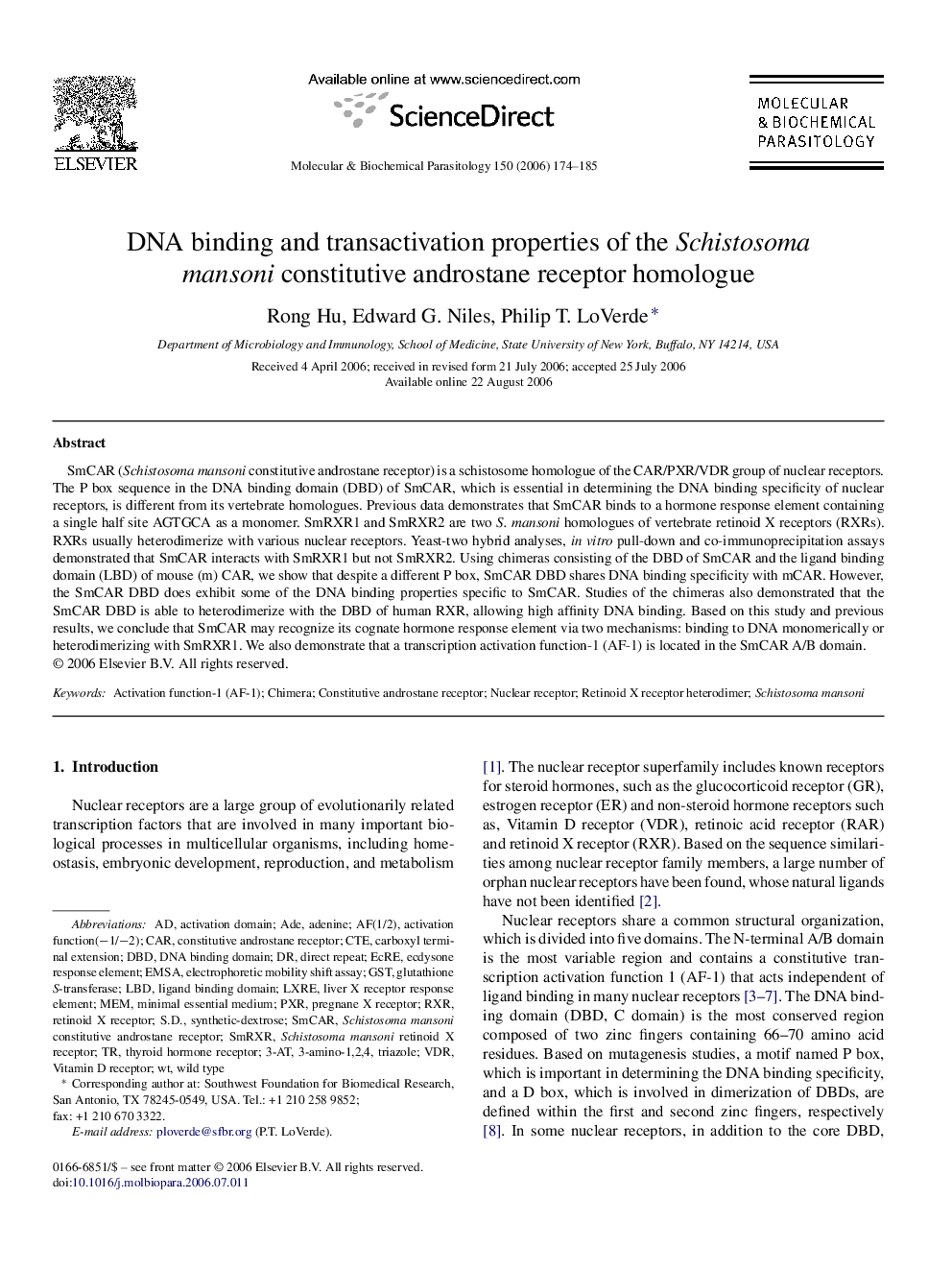| کد مقاله | کد نشریه | سال انتشار | مقاله انگلیسی | نسخه تمام متن |
|---|---|---|---|---|
| 5916138 | 1570660 | 2006 | 12 صفحه PDF | دانلود رایگان |

SmCAR (Schistosoma mansoni constitutive androstane receptor) is a schistosome homologue of the CAR/PXR/VDR group of nuclear receptors. The P box sequence in the DNA binding domain (DBD) of SmCAR, which is essential in determining the DNA binding specificity of nuclear receptors, is different from its vertebrate homologues. Previous data demonstrates that SmCAR binds to a hormone response element containing a single half site AGTGCA as a monomer. SmRXR1 and SmRXR2 are two S. mansoni homologues of vertebrate retinoid X receptors (RXRs). RXRs usually heterodimerize with various nuclear receptors. Yeast-two hybrid analyses, in vitro pull-down and co-immunoprecipitation assays demonstrated that SmCAR interacts with SmRXR1 but not SmRXR2. Using chimeras consisting of the DBD of SmCAR and the ligand binding domain (LBD) of mouse (m) CAR, we show that despite a different P box, SmCAR DBD shares DNA binding specificity with mCAR. However, the SmCAR DBD does exhibit some of the DNA binding properties specific to SmCAR. Studies of the chimeras also demonstrated that the SmCAR DBD is able to heterodimerize with the DBD of human RXR, allowing high affinity DNA binding. Based on this study and previous results, we conclude that SmCAR may recognize its cognate hormone response element via two mechanisms: binding to DNA monomerically or heterodimerizing with SmRXR1. We also demonstrate that a transcription activation function-1 (AF-1) is located in the SmCAR A/B domain.
Journal: Molecular and Biochemical Parasitology - Volume 150, Issue 2, December 2006, Pages 174-185